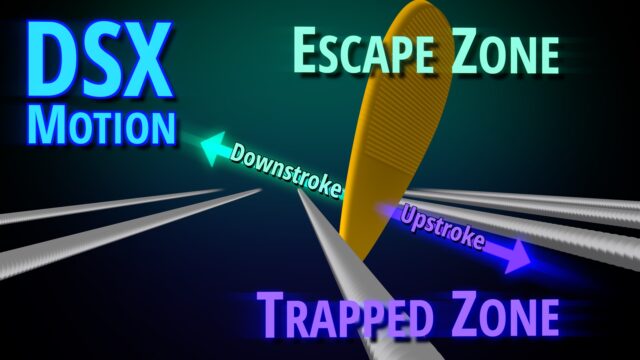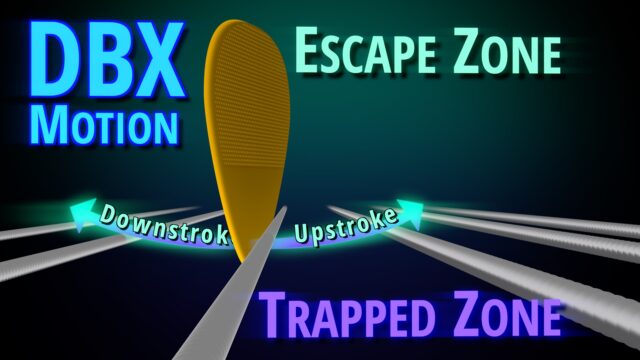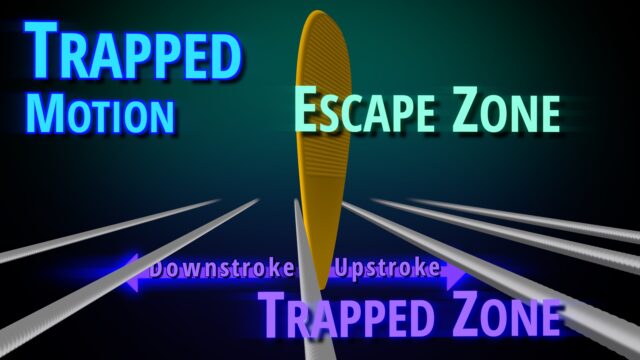Escape Motion Reference
Escape motion is a type of alternate picking motion that moves away from the body of the guitar along a diagonal or semicircular motion path. This allows the pick to escape from between the strings during part of its travel.
Escape motion is the principal method by which plectrum players avoid hitting unwanted strings during fast string changes. It is not a single motion, but a family of motions, each with different escape capabilities. If a phrase is not paired with an escape motion that matches its string changes, it cannot be played cleanly at high speed no matter how much practice is applied.
Cracking the Code’s interviews with picking pioneers like Michael Angelo Batio, Steve Morse, and Albert Lee represented the first systematic attempt to film and categorize the escape motions that expert players use. Prior to this, escape motion was not part of mainstream stringed instrument instruction. The specific terminology we created to describe it — including the phrase “escape motion” itself — didn’t exist yet. For more background, you can read about that history here.
The good news is that most joint motions used in picking technique already possess some type of escape. For many players, this amounts to a freebie that can be unlocked simply by becoming more aware of the type of escape motion they already use.
In the next sections we’ll take a look at how escape motions work, which kinds are available, and which players use them.





